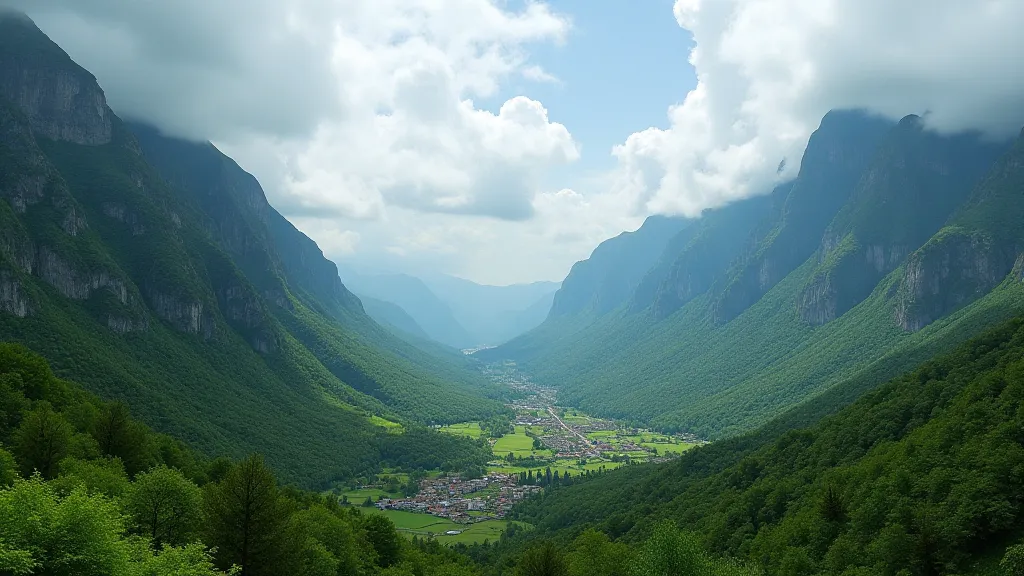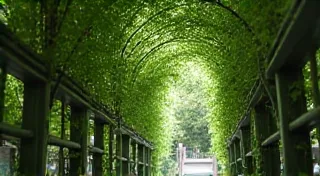Echoes in the Stone: How Topography Shapes Dialectal Drift
There's a particular resonance to an antique accordion, isn't there? More than just the bellows’ wheeze and the reedy notes, it’s a palpable sense of history. You can almost feel the hands that coaxed those melodies from its keys, the dances it accompanied, the stories it witnessed. These instruments, much like the languages they's been carried alongside, are shaped by the landscapes they inhabit. They’ve weathered isolation and embraced connection, just as dialects have, imprinted with the unique character of their surroundings. This isn't accidental; it’s the intricate dance between human movement and the stubborn influence of geography, a force we linguists call “dialectal drift.”

The Mountains as Walls: Isolation and Distinctiveness
Imagine a valley nestled between towering peaks, a place where the sun dips behind the ridges early and shadows linger long. For centuries, families lived here, largely separate from the broader world. This geographical isolation – the very thing that offered protection – also profoundly influenced their language. With limited contact with neighboring communities, linguistic innovations, subtle shifts in pronunciation and vocabulary, would arise and solidify within the valley, untouched by external forces. These weren’t conscious decisions; it was simply the natural evolution of language within a closed community.
The mountains, rivers, and dense forests acted as linguistic barriers, hindering communication and encouraging divergence. Consider the Appalachian region of the United States. The Appalachian Mountains, stretching over 200 miles, have long served as a formidable obstacle to easy travel and communication. This isolation fostered the preservation of archaic English features – vocabulary and pronunciations that had faded elsewhere in the country. You’re hearing, in many Appalachian dialects, echoes of 17th and 18th-century English, almost as if the mountains themselves have frozen time. Understanding how historical events shape regional speech—such as in cases of colonial influence—can deepen our appreciation of these linguistic variations. It’s a fascinating illustration of how communities, separated by physical barriers, can develop remarkably distinct linguistic identities—an idea further explored in Echoes of Occupation: How Colonialism Shaped Regional Speech. The pressures of colonialism and historical settlement patterns often leave an indelible mark on the vocabulary and grammar of a region.
Similarly, in the Swiss Alps, the isolation of remote villages has resulted in astonishing linguistic diversity. Small communities, separated by steep slopes and deep gorges, have developed dialects so distinct that speakers from different valleys often struggle to understand one another. It’s not uncommon to find unique vocabulary relating to local flora, fauna, or agricultural practices, reflecting the specific challenges and opportunities of their environment. Restoring an old Swiss bellows accordion, for instance, requires understanding these regional nuances; the materials, the techniques, even the tonal preferences can vary greatly. The fascinating interplay of factors contributing to these distinctions highlights how seemingly small communities can exhibit incredible linguistic diversity. The sense of belonging fostered by a shared dialect is often deeply interwoven with the broader cultural identity of a place, and is a vital component of preserving that heritage. This concept of dialect as a key element of identity is further explored in Dialect as Armor: Linguistic Identity and the Defense of Local Heritage. It’s truly remarkable how language becomes a protective shield, a symbol of community and shared history.
Rivers as Conduits: The Spread of Innovation
While mountains often impede communication, rivers and valleys often serve as conduits. Waterways historically provided vital transportation routes, facilitating trade and interaction between communities. This increased contact can lead to the spread of linguistic innovations. A new pronunciation, a borrowed word, a grammatical construction – once adopted in one community, it can readily diffuse along the river valley, influencing the speech of those downstream. The Dutch riverlands are a wonderful example, where the flat terrain and navigable rivers allowed for consistent interaction between settlements.
Think of the Mississippi River in the United States. It's a powerful artery of commerce and communication, and its influence on language is undeniable. While it couldn’t entirely overcome the Appalachian linguistic barrier, the river facilitated the transmission of language features between different regions, creating a complex interplay of influences. The fluidity of the river reflects, in a strange way, the fluidity of language itself – constantly changing, adapting, and spreading. The way commerce and trade routes can shape not only the exchange of goods, but also the evolution of language, is particularly illuminating. Often, specific words related to trade or industry become integrated into the local vernacular, permanently altering the linguistic landscape. Examining the linguistic impact of trade is a complex and rewarding field, and one that reveals much about the interconnectedness of language and society.
The Subtle Art of Restoration: Listening to the Landscape
The restoration of an antique accordion – a task demanding patience and skill – offers a unique perspective on this dialectal drift. Each instrument carries a history not just of its maker, but of the region it belonged to. The type of wood used, the style of ornamentation, even the tuning of the reeds, can offer clues about its origins. A bellows accordion from the Black Forest region of Germany, for example, will have distinct characteristics compared to one from Ireland or Italy. The very materials—the linen for the bellows, the leather for the valves—might have been sourced locally, reflecting the regional economy and available resources.
A craftsman restoring such an instrument must listen – not just to the sounds of the accordion, but to the echoes of the landscape that shaped it. Understanding the regional traditions of music-making, the local dialects, and the economic realities of the time can inform every step of the restoration process. Sometimes, simply noticing how the bellows fold differently, or why a certain key is slightly out of tune, can reveal important information about the instrument’s history and its connection to its surroundings. It’s almost as if the accordion itself is whispering stories of its past, waiting for someone to listen carefully enough to understand. The influence of trade on these regional nuances is often very evident, shaping both the materials used and the artistic techniques employed. The fascinating interplay between localized practices and broader economic forces makes each restoration a journey of discovery.

The Valley’s Voice: A Living Legacy
The study of regional dialects isn't simply an academic exercise; it’s a way of preserving a vital part of our cultural heritage. As globalization and increased mobility erode traditional boundaries, dialects are facing increasing pressure. Younger generations may adopt more standardized forms of language, leading to the gradual disappearance of unique regional features. The sense of identity that is often intertwined with regional dialects and local languages makes their preservation critical, and underscores the importance of defending the linguistic heritage of local communities. The constant push and pull between standardization and regional distinctiveness shapes the evolution of language in profound ways.
It's our responsibility, as linguists and as citizens, to document and celebrate this linguistic diversity. Just as we cherish antique instruments, meticulously restoring them to their former glory, we must also cherish the voices of our local communities. Because in those accents, in those unique turns of phrase, lies a profound connection to the landscape, to the history, and to the very soul of a place. The voices of the valleys are, quite literally, echoes in the stone, whispers carried on the wind, a testament to the enduring power of geography and human connection. This idea aligns with the concept that language is more than just a tool for communication; it’s a living archive of a community’s history and experiences—an idea explored in greater depth when considering The Whisper of Trade: How Commerce Shapes Dialectal Vocabulary. The vocabulary itself becomes a reflection of the goods and services exchanged, creating a rich tapestry of linguistic heritage.






